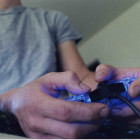
National Youth Justice Awareness Month Aims to Raise Issue of Juvenile Incarceration
|
This October marks the fourth annual National Youth Justice Awareness Month. The month long program, sponsored by the Campaign for Youth Justice, involves activities and events across the United States that are centered on raising awareness and civic involvement with youth justice issues, primarily the incarceration of minors in the prison system of the nation.
National Youth Justice Awareness Month was created by Tracy McClard, a Missouri mother whose 17 year-old-son committed suicide while incarcerated in an adult prison. McClard, who now runs the organization Families and Friends Organizing for Reform of Juvenile Justice, said that she began the program as a means to raise awareness about the incarceration of minors in the United States.
“One reason why we started the National Youth Justice Awareness Month is because [the general public] doesn’t understand what it’s like to have a child in jail at all,” McClard said. “If you don’t know what it’s like, it’s real easy to approve of policies that you don’t understand or know the statistics about.”
Advocates for reform also point to statistics showing the number of youth in detention. This week, for example, the Annie E. Casey Foundation issued a new report on juvenile detention in the United States. The report, No Place for Kids: The Case for Reducing Juvenile Incarceration, details the enormous cost associated with detaining tens of thousands of young people each year.








